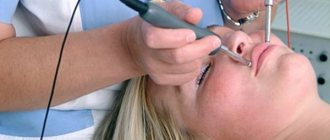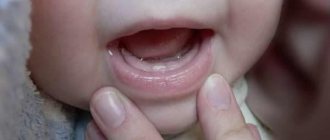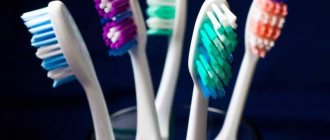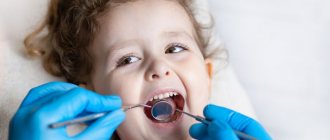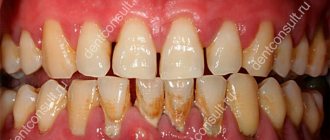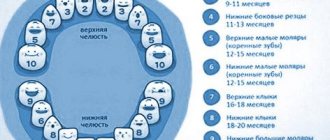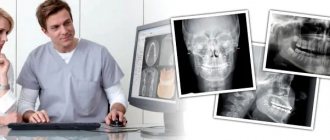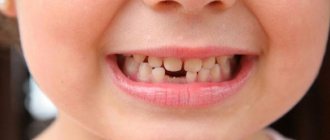What it is?
Professional teeth cleaning means removing hard and soft plaque from teeth, as well as polishing them. Therefore, the procedure usually consists of two parts, and various methods can be used to remove the stone, for example:
- mechanical;
- ultrasonic;
- laser:
- sandblasting (Air Flow);
- using the VECTOR device.
In serious cases, the dentist may use a combination of several methods. Most often, ultrasonic cleaning is done, and then for final polishing, Air Flow is used.
In addition to caring for your teeth, professional cleaning takes care of the condition of your fillings and polishes the filling material. This allows you to preserve the original color of the filling and prevent its destruction.
During the manipulation process, the dentist performs a hardware removal of all excess from the tooth enamel and removes particles from the oral cavity. At the end, a protective fluoride varnish is applied, which reduces tooth sensitivity and contributes to the long-term preservation of the light tone of the enamel and the smoothness of each tooth.
Should I brush my teeth?
The question of whether it is worth having professional teeth cleaning or using home remedies may be of interest to almost every person. To understand the need for such a procedure, you should know how plaque is formed.
Even if you carefully follow your dentist’s recommendations and brush your teeth regularly, ideally after every meal, using a toothbrush and the best toothpaste can only remove soft plaque. And even with the correct movements and careful work of the brush, there may be hard-to-reach places in the dentition where, in a short period of time, plaque is mineralized by calcium salts, which are contained in human saliva. As a result, hard plaque (tartar) forms, which cannot be removed at home.
Tartar is made up of bacteria that cause serious dental disease and can lead to the loss of one or more teeth. In addition, the stone is dark in color, so teeth lose their natural whiteness with plaque.
The peculiarity of the formation of tartar is that as soon as the first film appears on the teeth, the process accelerates significantly. The surface of the tooth enamel becomes rough, so various microorganisms easily stick to it. In addition to losing a beautiful appearance, a person develops bad breath.
To get rid of tartar and restore natural whiteness, you need to have your teeth cleaned in a clinic. Only a specialist with dental equipment can effectively remove plaque and tartar, polish and subsequently care for teeth.
Possible negative consequences
After the procedure, in some cases, patients experience bleeding gums and tooth sensitivity to thermal irritants. As a rule, this discomfort is temporary and goes away after a few days. Possible reasons:
At the time of cleaning, the patient’s gums were inflamed, and the condition was aggravated due to the stone located on the subgingival part of the teeth. In this case, the next step will be periodontal treatment. Damage to soft tissues during dental treatment. Ultrasound and sandblasting have a mechanical effect on the teeth, so after the procedure, swelling, bleeding or soreness of the mucous membrane may occur. The problem can be eliminated by rinsing with sage or chamomile infusions. Damage to healthy gums due to unprofessionalism of doctors. This complication is very rare, especially when the procedure is performed by specialists in large cities.
Category Hygiene Published by kosmetik-dent
How often should I clean?
Dentists have a unanimous opinion on the issue of frequency of teeth cleaning. The procedure should be performed 1-2 times a year, but not more often, so as not to damage the enamel.
It is necessary to take into account the individual characteristics of the body - for some it is enough to clean the stone once a year, while for another person plaque formation occurs faster, and he needs to visit the dental clinic once every six months.
In addition, professional teeth cleaning is indicated before prosthetics, implantation and dental treatment, as well as before teeth whitening. A clean tooth surface will allow the dentist to do his job better:
- better choose the color of the filling, crown or veneer;
- notice the onset of caries in time;
- prevent many gum diseases;
- achieve good treatment and whitening results.
This manipulation is recommended for those people who smoke and often drink drinks with dyes (tea, coffee, wine, etc.).
Cleaning methods
Currently, dentists offer several methods for cleaning teeth. The oldest is mechanical, when tartar is destroyed using a special tool in the form of hooks. This method can injure your gums, so it is rarely used.
One of the progressive methods is ultrasound. Cleansing is carried out using an ultrasonic scaler. Stones are destroyed by sound vibrations of a certain frequency, while plaque is removed and supragingival and subgingival pockets are cleaned. The doctor can use attachments of different sizes, depending on the complexity of the treatment area and the thickness of the plaque. In addition, during the work, water or an antiseptic is supplied to the oral cavity, which removes stone particles through a dental saliva ejector. The patient does not feel pain, but if the necks of the teeth are sensitive, the doctor administers local anesthesia.
Modern laser systems allow not only to remove the hardest tartar, but also to whiten teeth. The device causes the evaporation of moisture contained in plaque and removes deposits from the enamel in layers. At the same time, the enamel receives a lighter shade, and the achieved result of a snow-white smile will last for several years. The procedure is absolutely painless, but for certain categories of patients there are contraindications.
The latest Swiss technology Air Flow makes it possible to remove particles of plaque, stone and pigments in hard-to-reach places, clean subgingival pockets and polish enamel. Treatment is carried out with a jet of cleaning mixture, which consists of sodium bicarbonate and water. Under high pressure, this composition is applied to each tooth. Regular baking soda acts as an abrasive. This sandblasting method allows for high-quality hygienic treatment, removing all excess from the teeth, achieving a smooth surface of the tooth enamel and its natural lightening. The manipulation is painless and pleasant for the patient. The result is a Hollywood smile and clean teeth.
The VECTOR device is the latest word in dentistry. It is intended for the prevention and treatment of periodontitis and acts by vibration. This technique takes advantage of ultrasonic waves and the active action of a fluoride and calcium based cleaning mixture. Using such equipment, the doctor removes deposits and bacteria, cleans subgingival pockets and polishes tooth enamel.
Modern people have a wide choice of professional hygiene methods. A consultation with a dentist will help you choose the most suitable one.
Harm
Air abrasive treatment consists of particles of soda NaHCO3 (or silicon oxide SiO2, calcium carbonate CaCO3, etc.) flying out of the dental apparatus under pressure and knocking out the surface layer of dental plaque. In addition to dental plaque, the outer part of the enamel is also removed (a very small amount, invisible to the eye). The fear of completely wearing off your enamel with annual cleanings is not justified, however, after using AirFlow, the tooth surface becomes uneven. And not only where the plaque was, but also in neighboring areas (where soda powder gets). This leads to rapid re-adhesion of plaque. To eliminate this drawback, it is recommended to polish the teeth with brushes and pastes after brushing in the dentist’s chair. However, it should be understood that a rotating brush may not reach all places on the tooth where mini-particles of soda have been. Most contact surfaces are poorly polished.
Another disadvantage of air abrasive treatment is the inevitable injury to the gums. The gums, in the presence of dental plaque, are inflamed to one degree or another, and contact with a stream of soda powder causes it to bleed. In sensitive patients, it can also cause pain. Bleeding goes away on the same day, but post-traumatic symptoms disappear completely within a week. Although most people do not pay attention to these minor troubles, some experience noticeable inconvenience.
It is extremely rare, but still such a complication as airborne emphysema occurs. If the marginal attachment is damaged, air from the AirFlow device under pressure penetrates the soft tissue. The gums and cheek increase in volume, and when you press on them, a crepitating sound is heard. The appearance of a swollen face greatly frightens the patient himself. But in the vast majority of cases, emphysema does not cause serious problems or complications. No intervention is needed to eliminate it. After a short time it goes away on its own. To prevent infection, you can take a course of antibiotics.
To prevent the formation of air emphysema during subsequent professional cleanings, AirFlow should be performed before ultrasonic treatment, and not after.
Ultrasound, if used carelessly or incorrectly, can create enamel cracks. Such cracks by themselves do not lead to subsequent destruction. But the mechanical strength still decreases, and when other factors (trauma or caries) are added, the weakened enamel flies off more often. Over the years, the crack can accumulate food pigments and turn dark. This does not lead to caries, but the appearance worsens.
The pain from ultrasonic cleaning is higher than from air-abrasive cleaning. It also usually goes away within a week, but ultrasound is more difficult to endure. Approximately 98% of patients do without anesthesia; for the most sensitive 2 percent, professional hygiene with anesthesia is recommended. To completely “freeze” the oral cavity, 6-10 injections are required. In this case, “spraying” or “anointing” the gums will not work - application anesthesia anesthetizes only soft tissues, and with ultrasonic cleaning, the teeth, not the gums, hurt. A large number of injections may not have the best effect on the patient’s general condition, so it is advisable to split the procedure into two doses. First, for example, brush only the upper teeth under anesthesia, and the lower teeth at the next visit.
Indications and contraindications
Teeth cleaning in a dental clinic is recommended for everyone, but those people who:
- have installed permanent dental structures (braces, veneers, crowns, implants, etc.);
- are going to undergo professional teeth whitening;
- planning prosthetics or dental treatment;
- smoke;
- drink a lot of drinks that have a coloring effect (coffee, tea, etc.).
If there are certain health problems, a person cannot use any of the teeth cleaning methods offered by dentists, but if necessary, you can choose another option. For example, temporary contraindications include:
- inflammation of the oral mucosa;
- ARVI, bronchitis or other diseases that make nasal breathing difficult;
- pregnancy and breastfeeding period.
In such cases, professional teeth cleaning can be done after such reasons have ended.
General contraindications include the following health problems:
- arrhythmia and other heart diseases;
- asthma;
- increased sensitivity of teeth;
- allergic reactions;
- tuberculosis;
- hepatitis;
- various infectious diseases;
- epilepsy, etc.
Such manipulations are not performed on children and adolescents; if necessary, stone cleaning can be carried out if permanent teeth are present (over the age of 12 years).
What not to do after prof. cleaning?
When a person has spent time and money, visited a dentist and received an excellent result in the form of clean teeth and a snow-white smile, the desire to preserve all this for a longer time becomes understandable. Therefore, it is important to follow the following general recommendations:
- do not eat or drink (especially drinks with dyes) for 2 hours after the procedure;
- Replace an old toothbrush that contains bacteria with a new one;
- for 7 days, eat less foods that can stain tooth enamel (coffee, wine, tea, etc.);
- rinse your mouth after every meal;
- regularly brush your teeth with the correct movements, use special threads;
- Go to the dentist once every six months.
Which brush to use
As we found out earlier, you should choose a toothbrush based on the sensitivity of your teeth. Dentists recommend using brushes with low or medium hardness.
Stiffer brushes can only be used as prescribed by a specialist and all recommendations are followed. Otherwise, you may damage the surface of your teeth and soft tissues.
Electric toothbrushes are not as effective as they might seem. They do not sufficiently clean the surface of the tooth and drive food debris into the space between the tooth and gum. It is better to opt for a regular brush with a hardness that suits you.


